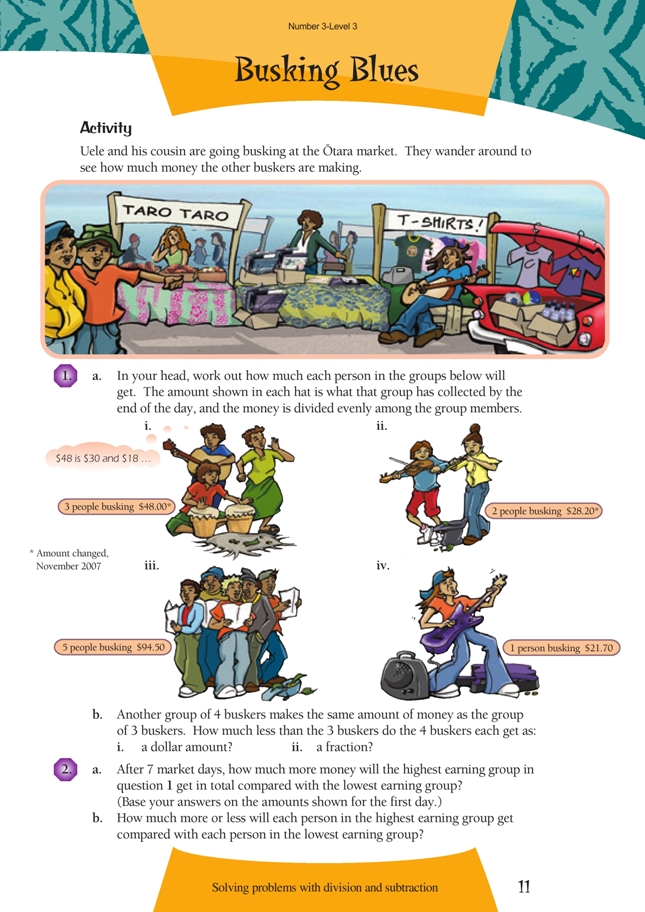This is a level 3 number activity from the Figure It Out series. It relates to Stage 6 of the Number Framework.
A PDF of the student activity is included.
Click on the image to enlarge it. Click again to close. Download PDF (365 KB)
solve problems involving money
In this activity, the students will use operations with dollars and cents and work with fractions. They should know their multiplication and division basic facts.
Encourage the students to solve the division problems in their heads rather than using a pencil and paper or their calculators. Some students may need to revise mental strategies for division of whole numbers and decimals. A common strategy is to “break up the amounts” to make the divisions easier. If we take $48.60 ÷ 3, we can split the 48.60 up into 30, 18, and 0.6 (for easy dividing by 3). For $94.50 ÷ 5, we can split the dollar amount into 90 and 4.50 (for easy dividing by 5). The students can check their answers by multiplying the shared amount by the number of people.
Question 1b requires the students to divide $48.60 by 4 and then to subtract this amount from the amount found in 1a i. The second part asks them to find what fraction the amount found for 1b i is of the amount found for 1a i. If the students have difficulty with this, remind them that they are looking for how much less the buskers earn as a fraction and discuss the relationship between the two amounts, $4.05 and $16.20. You could do this by separating the dollars and cents. 16 is 4 x 4, and 20 is 4 x 0.05. So $4.05 is 1/4 of $16.20.
For question 2, a table is a useful way of keeping track of the amounts for each group. A possible table is:
The students need to multiply the 1-day amounts by 7 and then divide this amount by the number of buskers. Wherever possible, encourage the students to work out the problems mentally and check their answers using written methods or a calculator.
You could have an interesting discussion with your students about how much each member of the group that earns the most each day receives in comparison with the other buskers. The students need to consider the pros and cons of busking alone or with others: an individual busker possibly earns more, but buskers performing together can support each other.
Answers to Activity
1. a. i. $16.20
ii. $14.05
iii. $18.90
iv. $21.70
b. i. $4.05
ii. 1/4. (Each of the 4 buskers gets $12.15.
This is 3/4 of the $16.20 that the 3
buskers each get, so they get 1/4 less.)
2. a. $509.60. ($661.50 – $151.90)
b. $19.60 less. ($661.50 ÷ 5 = $132.30.
The single busker gets $151.90.
$151.90 – $132.30 = $19.60)

